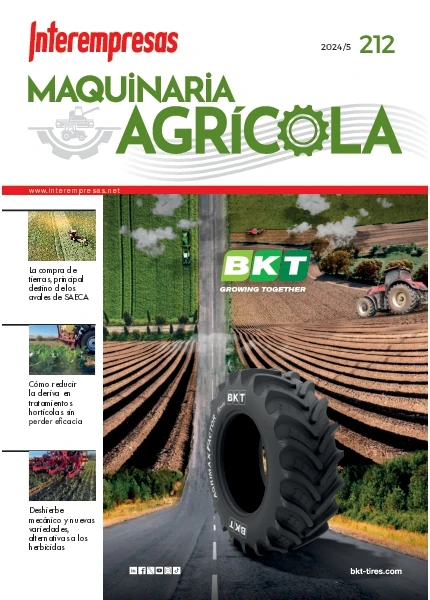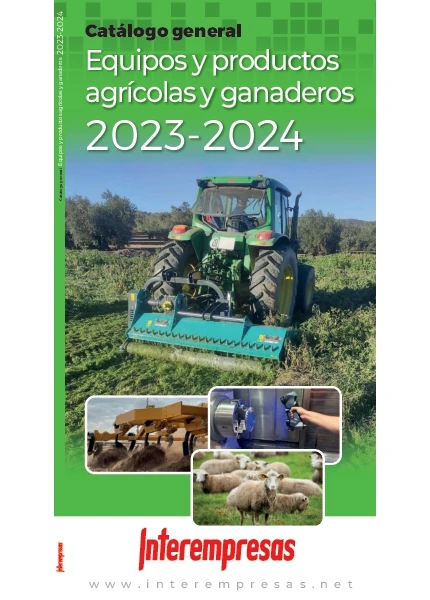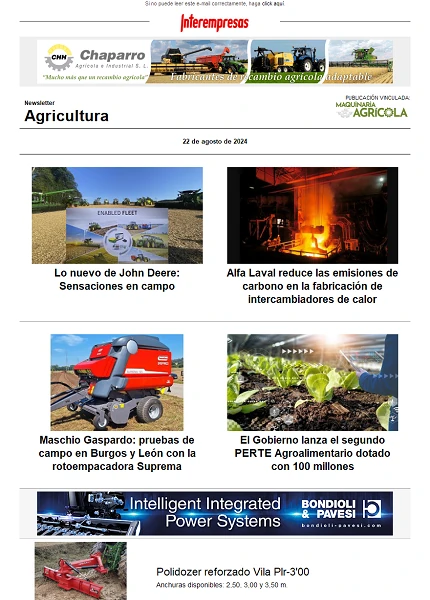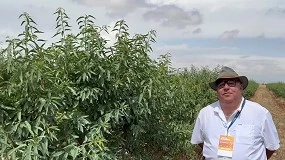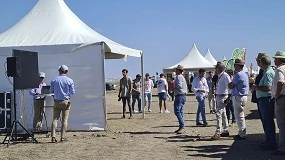Sustainable development: a proposal that grows in the construction
April 27, 2010
Sustainable development, definition and history
The expression 'Sustainable development' appeared officially in 1987, the report ' Our common future' of the United Nations Commission on environment and development. A report drawn up by Gro Harlem Brundtland, then first Minister of Norway. Since the environment has become a concern in the world, with a growing impact on all sectors of activity.
In the course of half a century, the standard of living of a large part of humanity has evolved more than for two millennia. But on the other hand, industrial disasters have continuously multiply: Chernobyl, Bhopal, Seveso, Exxon Valdez by mentioning some of the most serious. Not to mention disturbing environmental damage that are continually being created: pollution of air and water, massive disappearance of animal and plant species, deforestation, and desertización…
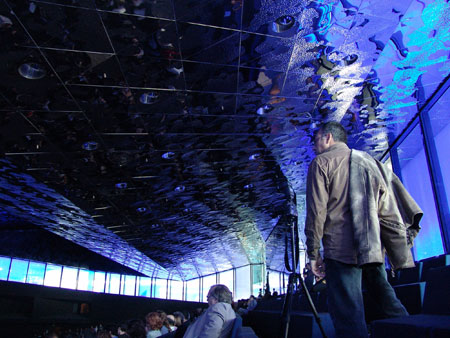
This context made emerging key issues: how to reconcile the economic and social progress without endangering the natural balance of the planet? How to distribute the wealth between rich countries and the least developed? How can give something of wealth to these millions of men, women and children still stripped when the planet already appears to be stifled by the rampant reduction of their natural resources?.And above all, how to leave a land with good health for our children? 20% Of the population consume 86% of the resources, and 20% of the poor consume barely 1% of the resources.
The concept of sustainable development was created to provide concrete answers to these questions. A concept is now summarized in a simple phrase: "development that meets the needs of the present without compromising the ability of future generations to meet their own".
To get up there, companies, public administrations and society must work together in order to combine these three universes that have been ignored since a long time: the economy, the environment and social progress. In the long term, there will be no development if it is not economically efficient, socially equitable and environmentally acceptable.
3 Q: three poles interelacionados for the sustainable development of humanity
3 Associated sustainable development aims to:
• social equity (People)
• the preservation of the environment (Planet)
• economic efficiency (Profit)
-1972, Stockholm: United Nations meets for the first time to evoke the environmental impact of the strong industrialization of developed countries on the balance of the planet. This Conference gave rise to the UNEP (United Nations Environment Programme).
-1987: The term "Sustainable development" appears in an official manner, the report "Our common future" of the Prime Minister of Norway, Gro Harlem Brundtland. The economic and social divide between the developed countries and the third world is added to exclusively environmental concerns of the United Nations.
-1988: IPCC / UN, Intergovernmental Panel for climate change
-1992: "Earth Summit" in Rio de Janeiro.
For the first time meet national authorities (164 Nations and more than 100 heads of State) to address the issue of sustainable development. Each country draws up an Agenda 21 (or how to improve the balance of the planet in the coming 10 years, so the twenty-first century is the century of sustainable development). For the first time, the political debate leaves the areas to alert and mobilize the public opinion: each has its role to create a better development of mankind thereafter. 'think Global, act Local' (think at the global, act local) became the new motto since the 1990s.
-1994: Aalborg, Charter of European cities for sustainable development
-1997: Kyoto Protocol on climate change
-2000: Living Planet Report 2000, WWF
-2002: Johannesburg Summit of Earth + 10 l
-2003: Living Planet Report 2002, WWF
Construction: a strong impact on the environment
The construction of a building necessarily has an impact on our environment, both positive and negative (modification of the landscape, the changes in the way of life of the inhabitants, the change of the media or the delivery time). The Aalborg Charter was approved in May 1994 by the participating local authorities in the European Conference on sustainable cities held in Aalborg (Denmark).
We understand that our current urban way of life, in particular our structures of Division of work and the functions, the occupation of land, transport, industrial production, agriculture, consumption and leisure activities, and therefore our standard of livingmakes us particularly responsible for many environmental problems facing humanity. This fact is especially significant if one takes into account that 80% of Europe's population lives in urban areas.
US cities, we are convinced that the city, at the same time, is the largest entity capable of initially dealing with the many imbalances architectural, social, economic, political, environmental and natural resources that affect the modern world and the smallest unit in which the problems can be properly solved in an integrated manner, holistic and sustainable.
We can also say that:
-50% Of all the world's resources are allocated to the construction.
-45% Of the energy generated is used for heating, lighting, and ventilating buildings.
-40% Of global use of water is for the construction.
-60% Of the best arable land which is used for agriculture is used for the construction.
-50% Of global warming produces the consumption of fossil fuel used in buildings.
-Only 2.7% of the water consumed per person per day is to drink.
-For all these reasons it is important to lay down rules in this area; in order to preserve the environment.
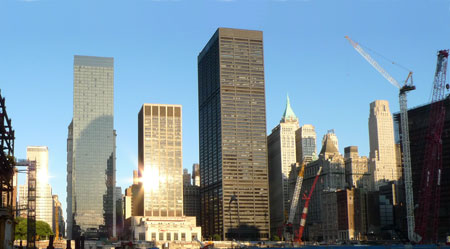
The 14 commandments of the eco
(Es_su_aptitud_para_satisfacer_dos_exigencias_complementarias:_A) control the impacts of the building on the external environment and (b)) to create a comfortable and healthy indoor environment for its users. These concerns must be applied in the construction and more widely in urban planning and the development of a country (industrial zones, residential areas and infrastructure).
Our counterpart association in France (Otua) has published a journal called "The steel for a construction responsible" referring to the 14 requirements defined by the Association HQE (Haute Qualité Environnementale-France) where specified environmental standards that have to be fulfilled by a building during all phases of his life. To learn about the requirements and the solutions proposed by the steel. The responses of steel to the 14 requirements defined by the Association HQE.
France and the Netherlands are the first countries that has provided standards for the integrated choice of procedures and construction products. In other countries of Europe (Germany, Great Britain, Nordic countries) have begun to work within the ISO (International Standard Organization) and CEN (European Committee for standardisation). There is a real need for European harmonisation to these statements of environmental data of the construction products. Referential French (FDES) is a point of reference and today a main tool in the European concert. Steel provides appropriate responses to the vast majority of these requirements, such as controlling the impacts of the building on the external environment.
1. Harmonious relationship of the building with its immediate environment. Solutions in steel: lightness, elegance, brightness.
2. Integrated choice of procedures and construction products. Solutions in steel: logic of the economy of resources, the advantages of soportes-vigas structures.
3. Work to generate the minimum damage. Solutions in steel: "dry work," prefabrication workshop, clean "deconstruction".
4. Energy management. Solutions for steel associated with other materials: high thermal efficiency.
5. Management of the water. Solutions in steel: metal structures favor water recovery systems.
6. Management of waste. Clean steel solutions.
7. Management of the maintenance and cleaning. Solutions in steel: durable, easy clean-up and dismantling.
8 - Comfort hygrothermal. Solutions in steel: facade systems adaptable to the demands of sustainable construction.
9. Acoustic comfort: the steel associated with other materials solutions: excellent.
10. Visual comfort: steel solutions: lightweight structures, large spaces, open to natural light.
11. Olfactory comfort: steel solutions: odorless.
12. Sanitary quality of the spaces. Steel solutions: hygiene, cleaning, electrical neutrality.
13. Sanitary quality of the air. Solutions in steel: respect for the quality of the air
14. Sanitary quality of the water. Solutions in steel: respect for the quality of the water
Ecological production and a laying
The steel is derived from the iron, one of the most abundant elements on Earth. But a large part of the steel produced in the world also comes from scrap is of steel recovered and recycled. The part of production of steel from scrap recycling reaches 40% of world steel production.
In less than 50 years, the consumption of energy required for the manufacture of steel and CO2 emissions have been reduced to half. Thus in the manufacture of steel pollutants emissions to the environment have decreased due to filtration and gas and powder recovery devices.
The used water are systematically treated in increasingly effective facilities. Recycling reduces consumption in nature reserves. All the generated waste products are reused almost. Emulsions that come from the development of gross foundries and steel are used as an example of material mineral of high value for the construction of roads, as I balasto, or for the manufacture of cement. The transformation without adjunctive treatment of this waste in cement avoids annually 4.5 million tonnes of limestone extraction, economizing 350 000 tonnes of coal, and reduced CO2 emissions by 2 million tonnes.
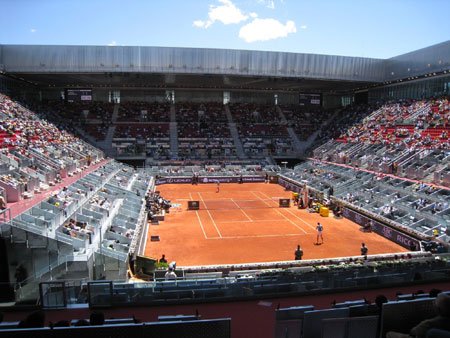
Steel is the most recycled material in the world. By its magnetic virtues, which are not in any other materials, steel is very easily selected among all types of waste (domestic, of work, etc.). It can be recycled indefinitely, to 100%, without losing any of its properties. In the field of construction, steel buildings are easily deconstruibles (dismantling and recycling of its components). Construction of steel at the end of the useful life period does not require demolition. Leave disassemble easily, safely and cleanly, then eventually they can use somewhere else. It's a selective deconstruction, which prevents noise, dust and other damages to the local environment.
This solution was used in historical buildings such as the markets of Baltard in Paris but also in recent constructions such as the parking of cars. The costs of reconstruction are generally inferior to a new building. Steel components can sometimes be reused, as the sheet piles that are traded in a market of rent.
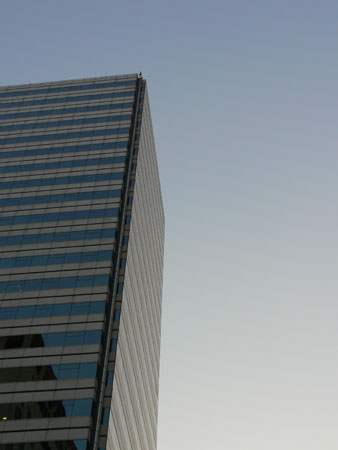
Cleaning works
Steel constructions belong to the "dry work" designation. It is characterized by the Assembly in the field of products and components made in factory, in the manner of a Meccano set. The works are therefore no waste, clean, dry and dust free. The products can be supplied in the time required for the Assembly, limiting the storage needs in work. The set-up times are reduced. The works are carried out quickly and clean. A realization in steel requires many fewer interventions of trucks in the work, therefore less inert waste, and less air pollution. In the city centres, adjacent roads are less crowded car and the movement is not disturbed, which significantly reduces the noise.
As for ease of maintenance, steel for construction can be supplied coated of paintings that facilitate cleaning and increase its resistance to corrosion. Lacquered steel, for example, are very easy to clean and anti-tag.
Adapting to all types of locations: used in element of facade or coating, the steel brings to architect a range of textures, geometries and colorful, that will help you to respond to the most demanding environmental limitationsfrom the most contemporary location up the centers of cities classified as historical, through the field. A material particularly adapted to the demands of the durable construction.
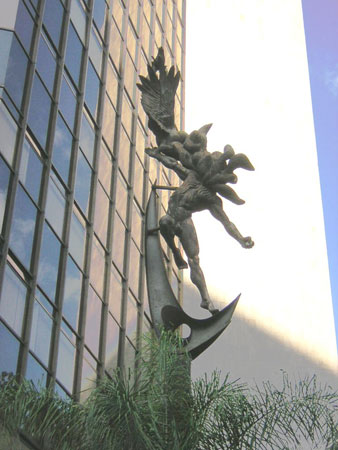
Comfort and safety during construction
Steel construction involves the application of semi-finished products in factory. Works are thus more pleasant for the workers, and minimize the inconvenience to the neighbourhood. On the other hand, the short time of realization in situ favors the safety of workers: how much less work at height, lower risk of accidents, less transport and shorter exposure to bad weather. Working in situ conditions are also more pleasant since, works are more clean and dry in the construction of the Board of the Millau Viaduct, for example, only 4% of working time needed interventions in height, with which there were fewer risks and easier working conditions.
The constructions in steel can easily transform and adapt to new needs. In housing, for example, steel allows expansions, closure of balconies, new boxes of ladder. These measures of update not only make them more attractive, they allow also to improve the quality of the Habitat and modify or profitably increase the useful space. In addition, thanks to the systems of panels sandwich (a soul of polymer between two sheets of steel), steel offers an excellent insulation.
Economic benefits of the eco
The implementation of the steel constructions is fast: the prefabrication of the elements in workshop reduces the construction schedules, Assembly time is short. Thanks to the numerous systems of protection against corrosion by metal coating (plating) and/or the application of paint, steel ensures works a length of almost unlimited life. Stainless steel does not require treatment of protection. The mechanical resistance of the steel reduces the amount of material needed to equal performance and security in connection with other materials.
In the old building of France Soir, Paris, the choice of high strength steels allowed to divide the pillars section 8. There where a concrete pillar has a section of 25 dm², a pillar of steel LEC has 3 dm². For the building of France Soir was thus achieved 100 m² of surface area available, thanks to the pillars of steel LEC. Also included the example of the Board of the Millau Viaduct: If the solution on concrete had chosen, would have been necessary 120,000 tonnes, rather than the 36,000 tons of steel needed for the solution of this material.
The structures of steel and glass, particularly in the large Windows, favour natural lighting, and therefore produced savings in electricity consumption. Over the life of the building, thanks to the effective techniques of external insulation and double façade systems, steel allows significant energy savings.


